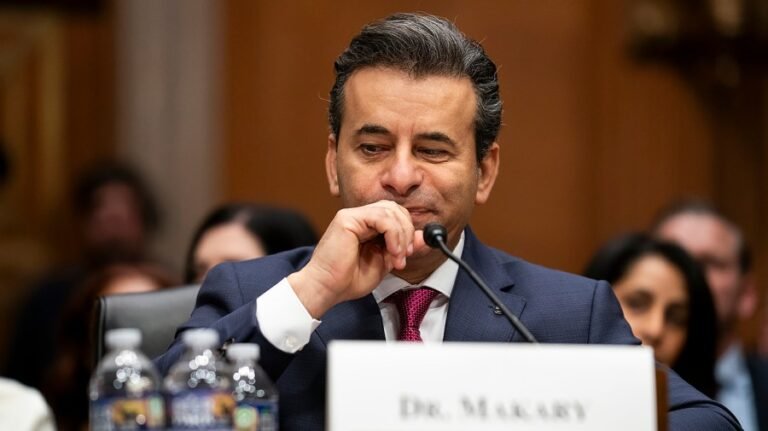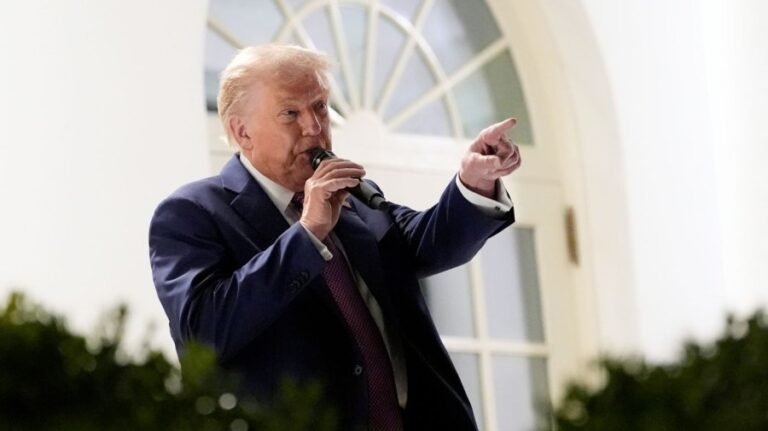
The U.S. economy added a paltry 22,000 jobs in August, adding to concerns about the health of the economy while increasing the chances of interest rate cuts by the Federal Reserve.
The unemployment rate ticked up to 4.3 percent, rising for the second month in a row, while the labor force participation rate increased after falling since April.
The data from the Labor Department followed a similarly dismal jobs report for July that showed an average of just 35,000 jobs added to the economy from May to July. The August report brings the three-month average down to 29,000 jobs.
Here are five takeaways on the new report.
Economy lost jobs for the first time since 2020
The latest jobs report includes further revisions to previous months, including an estimate that the economy lost 13,000 jobs in June.
That’s the first time a jobs report registered a negative jobs month for the economy since December 2020, when the economy shed 183,000 jobs.
The August report also increases the ratio of the number of those seeking jobs to the number of jobs open. There are now more than 200,000 people looking for work in the U.S. than there are available jobs.
It appears this is all leading to a slower growth in wages, which already have had trouble keeping up with inflation.
Private average hourly earnings are up 3.6 percent annually over the last three months, compared to 4-percent growth last year when inflation was mostly falling.
“Real wage growth is trending down,” Preston Caldwell, U.S. economist at investment bank Morningstar, said in a Friday commentary.
Manufacturers call for an end to tariffs
Businesses for months have complained that President Trump’s tariff regime is slowing the economy, chiefly by adding uncertainty.
The tariffs are a potential drag on the economy since they raise costs for companies selling foreign-produced products in the U.S. and for consumers buying them.
But the on-and-off nature of Trump’s tariffs has also drawn steady complaints from those who say businesses can’t effectively plan given the uncertainty of their costs.
The uncertainty has weighed on capital investment and hiring, business owners have said in various surveys.
Trump has justified the new taxes by arguing that they will help to reinvigorate U.S. manufacturing and create domestic jobs. He’s argued the U.S. will export more products manufactured in the United States and also sell more domestic products in the U.S.
But the data shows that at least in the short term, the manufacturing sector is struggling.
The economy lost 12,000 manufacturing jobs in August after losing 2,000 jobs in the sector in July and 17,000 in June, the Labor Department reported. Manufacturing employment has been declining since 2023, continuing a longer term trend going back to the 1980s.
The Alliance for American Manufacturing said Friday they’re hoping that the administration’s tariff initiatives and trade deals will wrap up and resolve into a more stable situation.
“The August jobs report should hopefully spur on two important actions. First, a cut in interest rates by the Federal Reserve. Second, concluding tariff actions and trade deals to provide businesses with the certainty they need to hire, invest in new capital equipment, and realign supply chains,” AAM president Scott Paul said in a statement.
Stagflation fears mount
The August labor report adds to concerns about stagflation – the dreaded combination of rising prices and stagnating growth.
Inflation has been ticking up over the past few months, rising from a 2.3-percent annual increase in April up to 2.7 percent in July, as measured by the consumer price index.
Prices in the personal consumption expenditures index have risen from a 2.2-percent increase to 2.6 percent over the same period.
Meanwhile, labor conditions have been weakening, with the unemployment rate rising to 4.3 percent from 4 percent since the beginning of the year.
Rising prices and unemployment aren’t really supposed to happen at the same time since labor costs are by far the main component of prices in the economy, and weaker labor conditions usually imply diminished price pressures.
However, they can happen together when supply is disrupted, as it was during the pandemic when lockdowns led to both labor shortages and increased demand for goods. Tariffs can behave the same way, though on a smaller scale.
“Tariffs represent a negative supply shock, which hurts production and raises prices – a much smaller scale of what we experienced in the pandemic,” Nationwide economist Kathy Bostjancic wrote earlier this year.
Even without the tariffs, the economy has been slowing down. Following the robust recovery from the pandemic, which was driven by enormous stimulus spanning both fiscal and monetary policy, U.S. gross domestic product fell from 2.9 percent growth in 2023 to 2.8 last year. For 2025, the World Bank expects it to fall to 1.4 percent growth while the International Monetary Fund is predicting 1.9 percent.
“The market is treading a very very narrow path to continued gains,” Seema Shah, head strategist at Principal Asset Management, wrote in a commentary Friday. “A strong inflation print next week could strike new fears about a stagflationary mix.”
The Fed is more likely to cut rates
The weak jobs numbers make it a near certainty that the Fed will cut interest rates at its meeting later this month. Rate cuts boost profits, which make companies more likely to expand operations and hire new employees.
Futures markets are predicting a quarter-point cut after the jobs report with 90 percent probability while giving 10 percent odds to a more substantial half-point cut.
“The fourth month of sub-par employment performance signals a dramatic stall in hiring and fully supports the Fed starting rate cuts at the next meeting on September 17,” Nationwide’s Bostjancic wrote Friday.
Stocks were initially up on Friday, perhaps because of the possibility of rate cuts, before dipping into negative territory later in the day on concerns of a slowdown. Bond yields also fell, with the 10-year down about a tenth of a percent as of 1:00 P.M. Eastern time.
“The engine of growth is paychecks to consumers who spend the money, who then justify the A.I. investments and all of the other optimism that the stock market seems to reflect,” Julia Coronado, a former Fed economist, told Bloomberg News Friday. “You need consumers having paychecks to demand those services.”
Unusually, both stocks and gold are near record highs – a correlation that’s likely related to Trump’s tariff shock. Gold investments are often used as a way to offset risk both in the equity market and against higher inflation.
Trump brushes off jobs report ahead of time
After the July jobs report was released, Trump fired Bureau of Labor Statistics (BLS) chief Erika McEntarfer, accusing the agency – without any evidence – of producing “rigged” data to make Republicans look bad.
He got in front of the Friday report, which showed a similarly lackluster performance, on Thursday evening, saying that “real numbers” will come next year.
“They come out tomorrow, but the real numbers that I’m talking about are going to be whatever it is, but will be in a year from now on,” Trump told reporters during a Thursday dinner.
Democrats are quickly seizing on the report to target Trump’s trade policies, in particular.
Senate Minority Leader Chuck Schumer (D-N.Y.) vowed Friday that Democrats “will force votes” on Trump’s tariffs, labeling the report a “blaring red light warning to the entire country that Donald Trump is squeezing the life out of our economy.”


